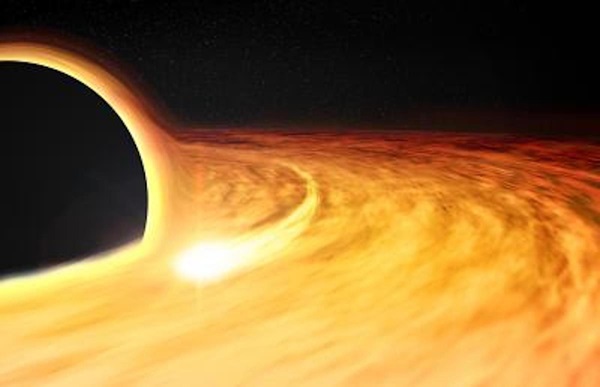Astronomers discover a superfast star coming out of supermassive black hole
Travelling at an extreme speed of six million km/hour, astronomers observed an ultrafast star ejected by a supermassive black hole at the heart at the Milky Way five million years ago.

Washington DC: Travelling at an extreme speed of six million km/hour, astronomers observed an ultrafast star ejected by a supermassive black hole at the heart at the Milky Way five million years ago.
Named S5-HVS1, the star located in the constellation of Grus, was observed to be moving 10 times faster than most of the stars in the galaxy and the discovery was made by Sergey Koposov, Carnegie Mellon University as part of the Southern Stellar Stream Spectroscopic Survey, appeared in the journal Monthly Notices of the Royal Astronomical Society.
"The velocity of the discovered star is so high that it will inevitably leave the galaxy and never return," said study co-author Douglas Boubert, University of Oxford.
Astronomers have wondered about high-velocity stars since their discovery only two decades ago. S5-HVS1 is unprecedented due to its high speed and close passage to the Earth, "only" 29 thousand light-years away. With this information, astronomers could track its journey back into the centre of the Milky Way, where a 4 million solar mass black hole, known as Sagittarius A*, lurks. "This is super exciting, as we have long suspected that black holes can eject stars with very high velocities. However, we never before had a clear association of such a fast star with the galactic centre," said lead author Koposov.

"We think the black hole ejected the star with a speed of thousands of kilometres per second about five million years ago. This ejection happened at the time when humanity's ancestors were just learning to walk on two feet," Koposov added.
Also Read | Caught in the act: a black hole rips apart an unfortunate star
Also Read: Saturn is the solar systems moon king with 20 more spotted
Superfast stars can be ejected by black holes via the Hills mechanism, proposed by astronomer Jack Hills 30 years ago. Originally, S5-HSV1 lived with a companion in a binary system, but they strayed too close to Sagittarius A*.
In the gravitational tussle, the companion star was captured by the black hole, while S5-HVS1 was thrown out at extremely high speed.
"This is the first clear demonstration of the Hills mechanism in action," explained Ting Li from Carnegie Observatories and Princeton University, and leader of the S5 Collaboration.
"Seeing this star is really amazing as we know it must have formed in the galactic centre, a place very different to our local environment. It is a visitor from a strange land," Li added.

Also Read |
Saturn is the solar system's 'moon king,' with 20 more spotted
The discovery was made with the 3.9-metre Anglo-Australian Telescope (AAT) near Coonabarabran, NSW, Australia, coupled with superb observations from the European Space Agency's Gaia satellite that allowed the astronomers to reveal the full speed of the star and its journey from the centre of the Milky Way.
Also Read: Planetary autopsies indicate worlds like Earth common in the cosmos
"The observations would not be possible without the unique capabilities of the 2dF instrument on the AAT," said Daniel Zucker, an astronomer at Macquarie University in Sydney, Australia, and a member of the S5 Executive Committee.
"While the main science goal of S5 is to probe the stellar streams -- disrupting dwarf galaxies and globular clusters -- we dedicated spare resources of the instrument to searching for interesting targets in the Milky Way, and voila, we found something amazing for 'free,'" said Kyler Kuehn, at Lowell Observatory and a member of the S5 Executive Committee. (ANI)
 Dynamite News
Dynamite News 